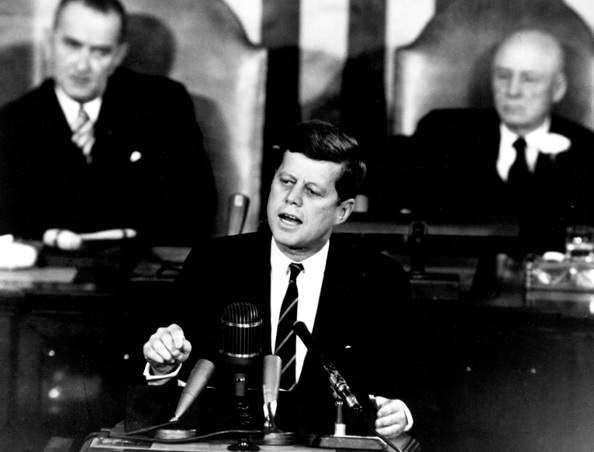
Every day I hear stories about the world changing rapidly. I hear both colleagues and customers talk about ‘We have to be ready for the future’ and ‘We have to be ready for disruptive changes’. However, rarely someone can provide the answer to the question: How?
As a historian, I sometimes occupy myself with the ‘how’ question when I look at disruptive technologies and systems over the years. One disruptive event still stands out. On 25 May 1961, President John F Kennedy announced the ambitious goal of sending an American to the moon before the end of the decade. To hear a next to impossible ambition being declared like that always reminds me to dream big, to think big.
However, while I encourage everybody to dream big, especially in the lease industry, I’m also quite done with talking about dreams and ambitions. Sometimes we simply need to act.
Don’t look back in anger
We all work in an industry that relies on a proven track record. An industry that is built upon making risk-assessments by looking at financial ratios such as solvability, current ratio and loan to value. It is based on looking back rather than on looking forward and what is happening around us.
How many times have you heard: ‘Sounds interesting, but we don’t have the capacity’, or ‘Great plan, but it’s not possible’? I’ve heard it a lot. You probably have too. Or you might be thinking ‘This man probably has very bad ideas’, and ‘What kind of company is allowing him to say all this?’
I believe that lease is a transparent and easy to understand financial product that is able to adapt to future demands such as circular business models and self-learning machinery. The company I work for listens to new ideas and dares to take deliberate risks in an industry driven by excluding risks. Our industry however, tends to approach new ideas differently.
The innovation norm
What do you do when you have a brilliant idea? You’ll probably check it’s feasibility with like-minded colleagues. After a few suggestions from them, you’ll talk to your boss who also proposes some improvements. Your next action is to gather a project team. Together, you’ll do research, draw up a plan, give presentations and process feedback. When you’re lucky, you’re ready to give a demonstration to the decision makers after a few weeks.
By then, your idea has probably grown out of proportion. As a result, the answers you’ll get vary from: ‘Sounds interesting, but we do not have the capacity’, to ‘Great plan, but it’s not possible’. Even though it all started with a combination of enthusiasm and a small and refreshing idea.
Lead the way
Our industry is quite traditional. We’re not an industry of front-runners. So what is our role? I don’t have the answer, but I do have some suggestions. A year ago, I changed my way of working. Instead of talking about my ideas, I started undertaking small actions within the boundaries of my day-to-day job. What happened is that the modest actions I undertook led to bigger movements that eventually resulted in, amongst others, the development of a new proposition for energy-saving equipment.
Also, by continuously speaking up, I noticed that there were a lot of colleagues who actually shared my point of view: What we can do is act.
This can be illustrated by having a closer look at emerging circular business models. I strongly believe that we will move, slowly, towards an economic system in which products and services are exchanged between customers and suppliers in a closed-loop cycle. This transformation will have an effect on the needs of our clients.
One of our clients, a big producer of elevators, faced a challenge that was new to both our companies. A pay-per-use proposition based on elevator movements for the end-user. My colleague decided not to follow the ‘innovation norm’ this time, but to simply act. He asked himself: ‘How can I help my client today? What can I actually do?’. Instead of engaging in a discussion about definitions and propositions within a project team, he based his aid on the issues the client faced that very moment. Together, they came up with an out-of-the-box solution that eventually helped shaping a new product. Although his solution wasn’t perfect, it was a start.
Dream big, but start small
We should look at financial ratios differently. We should evaluate if a business is future-proof rather than looking at numbers from the past. We should work more closely with our clients and actually translate innovation into propositions that help our customers to be future proof. Most importantly, we need to act.
We should dream big but start small. Innovation doesn’t just happen by thinking or talking about it. It happens when you try and approach things differently. It happens when your actions lead to bigger movements. Therefore, we need leaders that dare to be a Kennedy. Who dare to say: ‘We choose to go to the moon instead off let’s think about going to the moon’. So I urge you: stop being a thought leader and become an action leader instead.
About the author
Rick van Hemert, equipment specialist public an sustainability at ABN AMRO Lease, has a special interest in disruptive technologies and energy-saving machinery. With a Master’s degree in International Relations from Utrecht University, he likes to combine his historical knowledge with his expertise as an equipment specialist when it comes to analysing the impact of (technological) innovation. He also takes an interest in public speaking and human rights.

